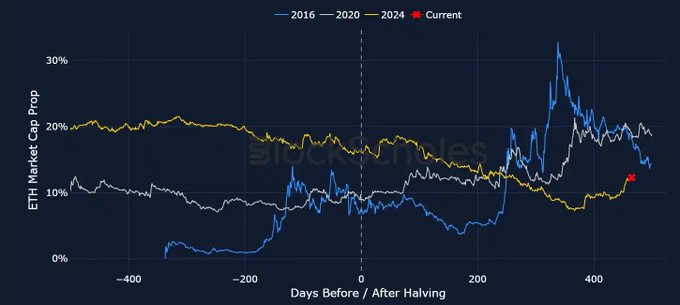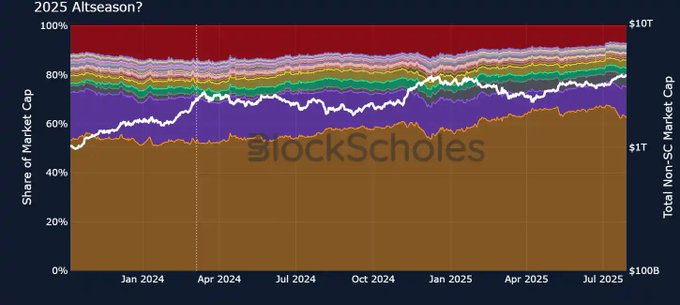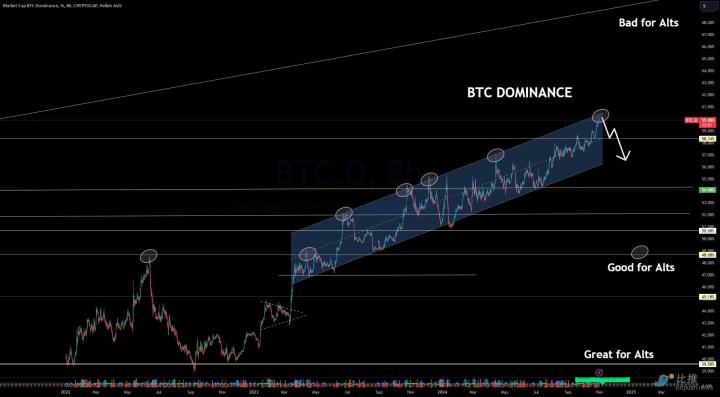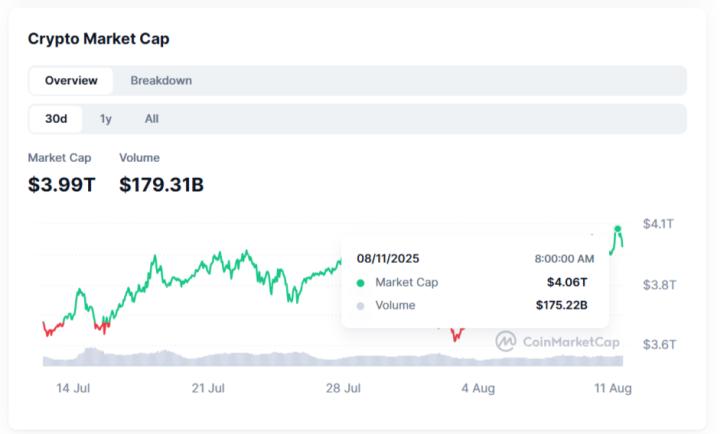Key Highlights:
Our latest quarterly report shows a significant deviation from the historical cryptocurrency market cycle: Bitcoin continues to dominate, and despite multiple historical peaks, it has not triggered the traditional off-season.
In previous halving rebounds, funds typically rotated to other coins as traders sought higher Beta exposure. However, in the current cycle, BTC's dominance remains on the rise, while Altcoins struggle to achieve significant performance. This shift is primarily attributed to the growing influence of institutional investors. With the emergence of ETF, corporate funds, and asset managers entering the field, Bitcoin has become the preferred tool for regulated exposure.
Is the Altcoin Season About to Arrive? If So, Delayed

Figure 1. ETH's proportion of non-stablecoin cryptocurrency total market cap before and after historical halving events (excluding 2012). Source: CoinGecko, Block Scholes
Although the Altcoin season has not yet materialized in this cycle, market sentiment is gradually adjusting to achieve a more institutionalized rotation. Since April 2025, supported by massive ETF inflows and increasing regulatory transparency, Ethereum has outperformed most Altcoins, especially in Staking.
However, the breadth of Altcoins remains weak, and ETH's market share is still below the peak of historical mountain seasons. The delayed rotation is attributed to structural changes in market participation, with institutions preferring large-cap assets and longer holding periods. The potential approval of Staking ETH ETF could be a catalyst, signaling a shift towards a more selective, quality-driven alternative season.
Despite Bitcoin's Ups and Downs, It Remains Unchallenged

Figure 2. BTC's dominance before and after historical halving events (excluding 2012). Source: CoinGecko, Block Scholes
Bitcoin's role in the cryptocurrency ecosystem is changing. Its dominance remains high, reflecting its increasing attractiveness as a macro asset for institutional investors. The launch of BTC spot ETF has brought more stable long-term capital, reducing volatility and suppressing speculative inflows to Altcoins. BTC now plays a less cyclical role as a trigger for alternative seasons and more as a liquidity anchor. Its correlation with traditional risk assets has increased, indicating that Bitcoin's price is more aligned with the global macro environment compared to native cryptocurrency sentiment.
If the Altcoin Season Hasn't Arrived, When Can We Expect It?

Figure 3. Cryptocurrency non-stablecoin market cap share from November 2023 to February 2025, categorized by BTC (orange), ETH (purple), and all other cryptocurrencies (red), with non-stablecoin market cap calculated logarithmically (white, right axis). Source: CoinGecko, Block Scholes
Subscribers should pay attention to several key indicators to anticipate alternative trading and broader market rotation:
- ETF inflows into ETH and any future products supporting Staking are key signals of institutional sentiment.
- Global liquidity indicators, central bank rate expectations, and stock market performance provide a macro context for risk behavior.
- In the cryptocurrency market, the continuous enhancement of ETH's dominance, expanding interest in Altcoin derivatives, and increasing breadth of mid-cap assets are critical technical markers.
Traders should also monitor volatility dispersion and changes in funding rates, which may precede capital shifting towards higher β Altcoins.







